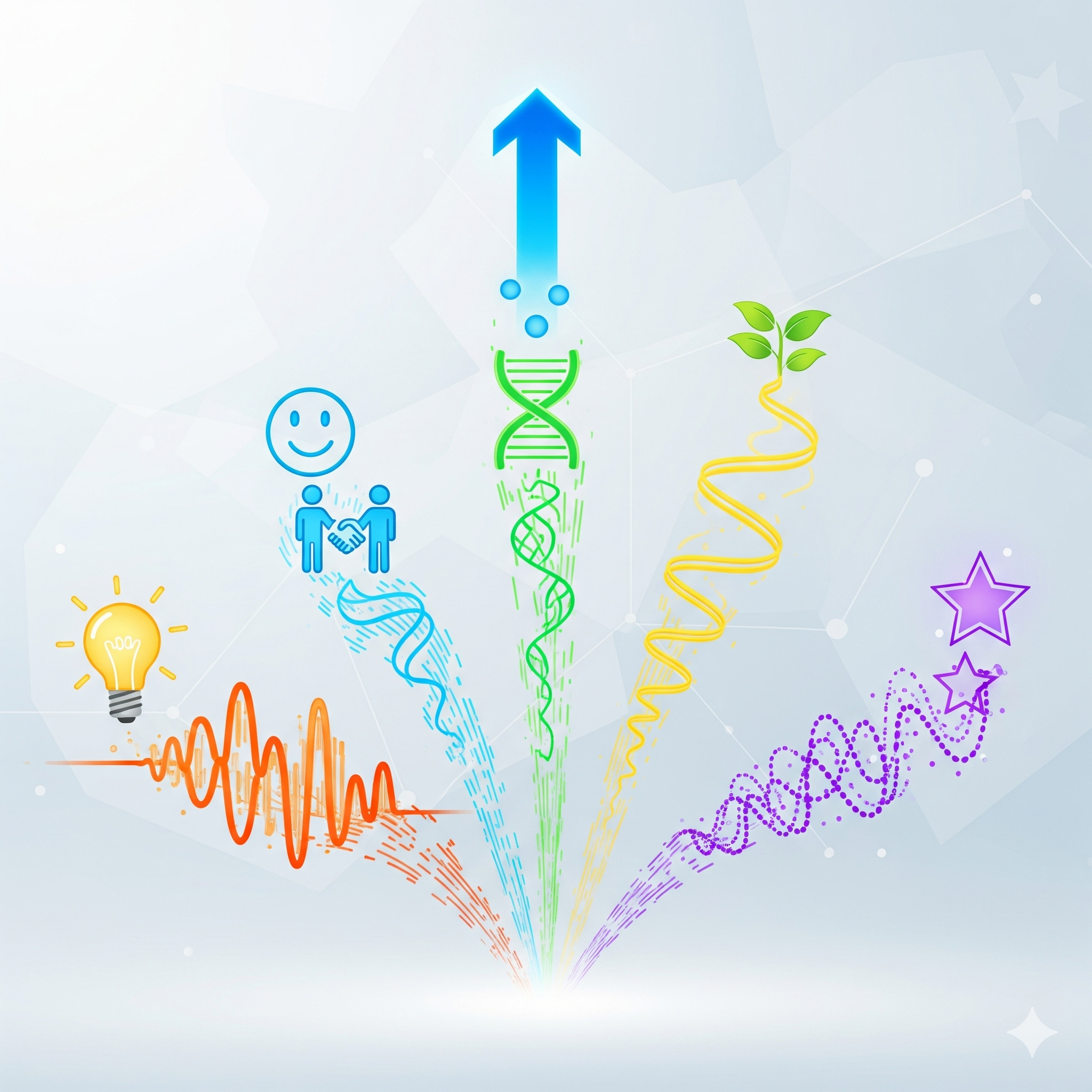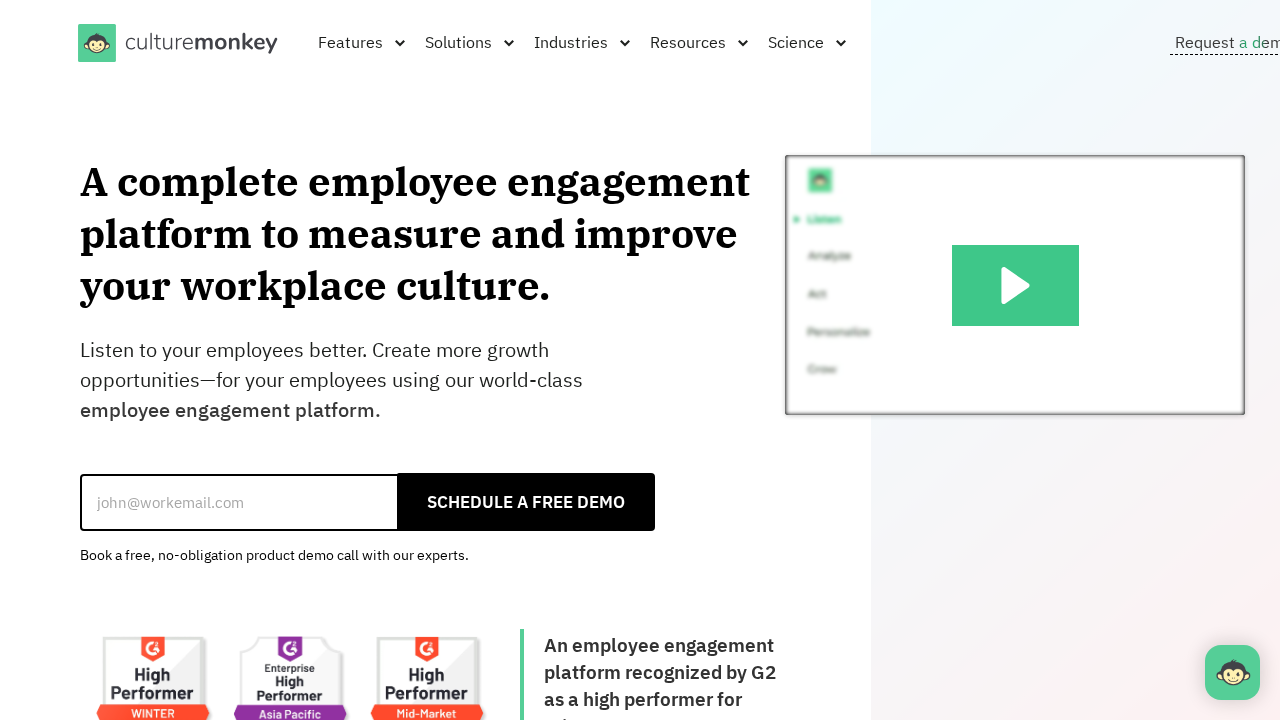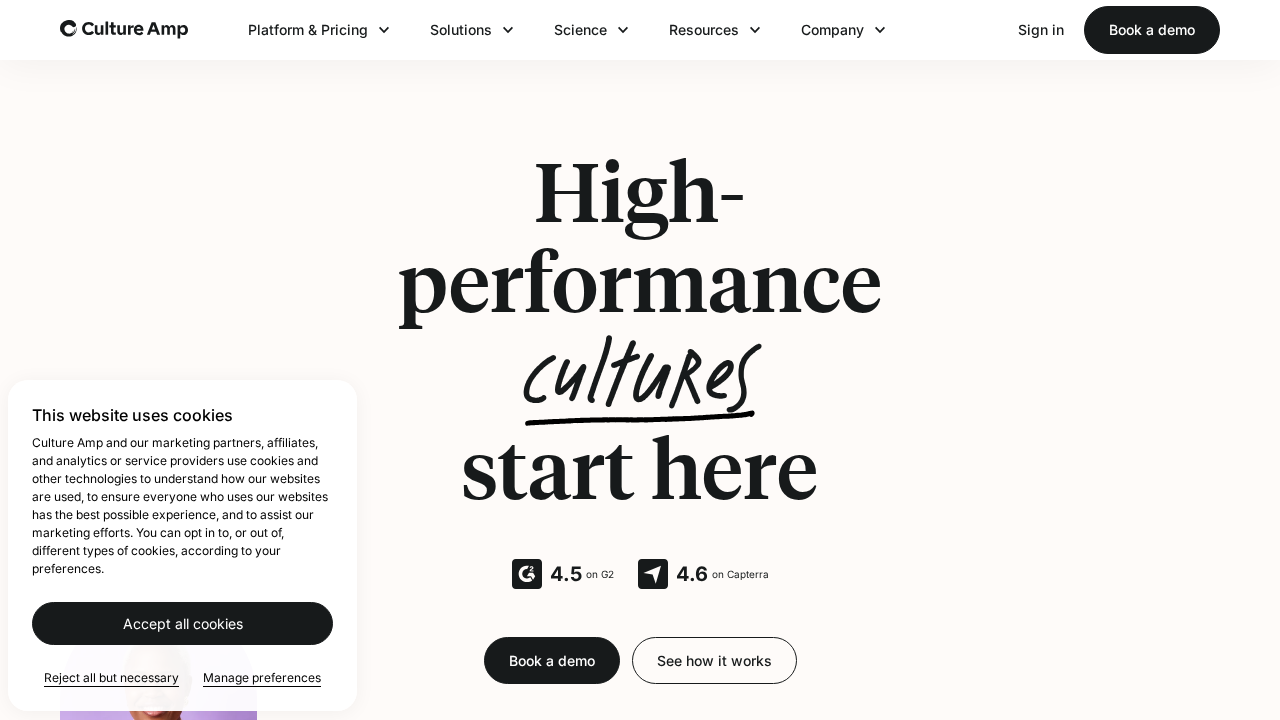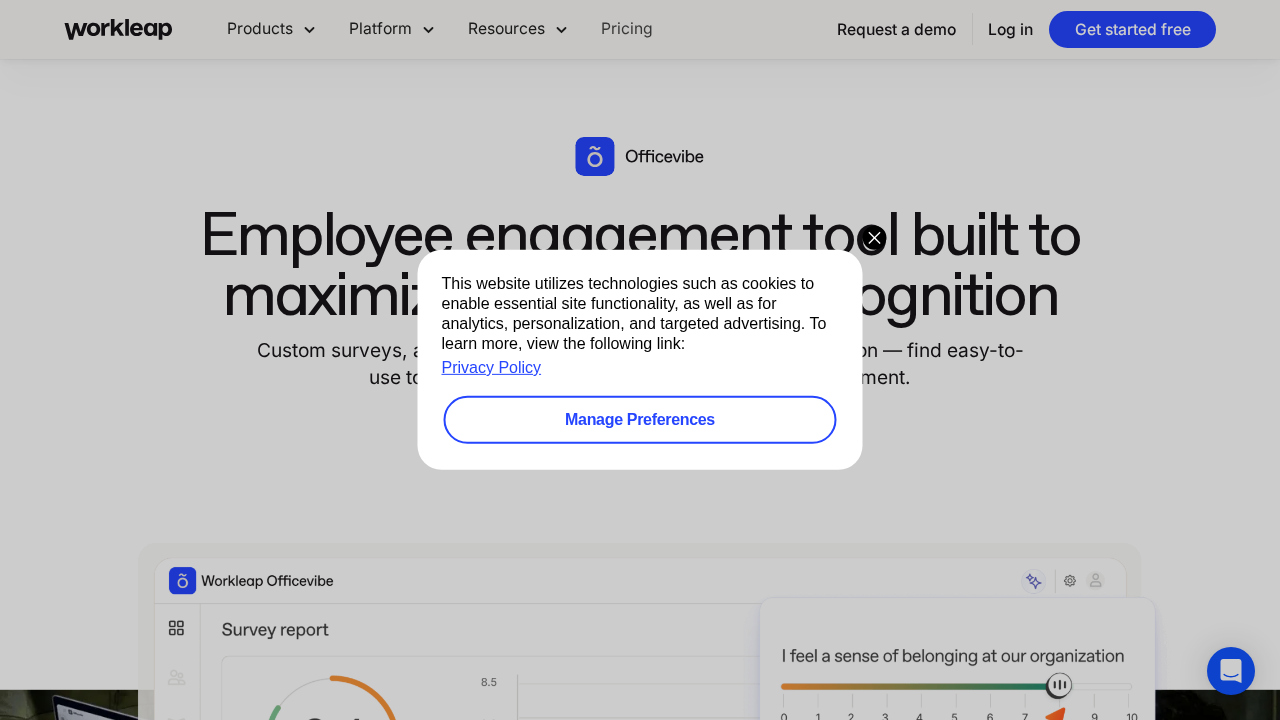Top 5 Automated Triggers That Boost Employee Engagement in 2025
on Agosto 18, 2025
In 2025, employee engagement will no longer be a task left to chance or sporadic efforts—it will be a data-driven, automated, and strategic process. The workplace of the future thrives on intelligent systems that bridge the gap between managers and employees, ensuring a seamless feedback loop and fostering a vibrant culture of engagement. Automation is no longer just a buzzword; it’s the backbone of modern HR initiatives, freeing up precious time and delivering actionable insights to increase productivity and happiness.
From AI-powered surveys to real-time sentiment analytics, the tools HR leaders have at their disposal are more sophisticated than ever. But with so many options available, how do you navigate the sea of platforms and triggers to find the one that’ll spark genuine engagement within your team? Dive into our curated list of the Top 5 Automated Triggers That Boost Employee Engagement in 2025 as we uncover what makes these platforms stand out—and how one solution is truly revolutionizing the industry.
Top apps:
1. Moodbit Copilot
2. CultureMonkey
3. SurveySparrow
4. Culture Amp
5. Workleap Officevibe
Moodbit Copilot
In the context of “Top 5 Automated Triggers That Boost Employee Engagement in 2025,” Moodbit Copilot emerges as a transformative tool that leverages generative-AI to empower HR teams, managers, and small-to-medium businesses (SMBs). By turning complex people data into actionable insights and workflow automations, it optimizes employee engagement and streamlines operations. Its advanced features enable organizations to focus on strategy rather than manual processes, delivering practical solutions to modern workplace challenges.
Pros
- Conversational data access: HR teams and managers can effortlessly ask natural-language questions (e.g., “How is employee sentiment trending this month?”) and receive immediate answers, charts, and actionable insights without requiring technical expertise or digging through dashboards. This dramatically reduces decision-making time.
- Document intelligence: With the ability to upload PDFs, surveys, and contracts, users instantly gain summarized information and recommendations. This feature eliminates hours spent manually reading through documents and transforms abstract data into actionable strategies.
- 24/7 assistance: Its HR chatbot delivers instant answers to employees regarding policies, benefits, and procedures, freeing HR teams from repetitive requests and improving the employee support experience.
- Seamless integration: Linking to major platforms like Slack, Microsoft Teams, Google Workspace, OneDrive, and SAP SuccessFactors, it eliminates tool-switching hassles and centralizes workflows while enhancing productivity.
- Strategic recommendations: Moving beyond raw data, it provides tailored solutions for talent management, employee well-being, and prioritized managerial actions to ensure that workplace trends are effectively operationalized.
- Time efficiency: Automatically generates reports, meeting summaries, survey follow-ups, and more, freeing HR teams from repetitive admin tasks and enabling them to focus on larger-scale people strategies.
- Cross-functional adaptability: Useful across HR, recruiting, onboarding, internal communications, and operations teams, it simplifies work for various departments by providing centralized, sharable insights and tools.
While the app’s many features provide unparalleled convenience, minor cons include a potential initial learning curve for maximum utilization and dependency on integrated systems.
Use Cases
- Real-time employee sentiment tracking: HR teams can use conversational analytics to monitor engagement trends and proactively address issues before they escalate, ensuring that employees feel supported and valued.
- Automating onboarding workflows: Seamlessly guide new hires through processes, documents, and policy FAQs, with support from the 24/7 HR chatbot. This streamlines onboarding while maintaining a personalized experience.
- Enhancing survey follow-ups: Automatically analyze survey results and generate actionable programs for improving workplace well-being, turning data into measurable change.
- Scaling HR for SMBs: Small teams can leverage automation to provide consistent, high-quality HR services, even as the workforce grows, ensuring smooth communication and processes at scale.
- Collaborative decision-making: Integrations with platforms like Slack and Microsoft Teams enable managers to receive relevant people data as automated meeting summaries, making team discussions data-driven and impactful.
CultureMonkey
Short Description: CultureMonkey is an employee engagement platform that focuses on gathering, analyzing, and acting upon employee feedback through automated surveys and engagement analytics. It aims to improve engagement, retention, and workplace culture across industries and teams.
Pros:
- Extensive survey customization and templates tailored for specific industries and organizational needs.
- Anonymous feedback tools to enable transparent and honest communication among employees.
- Automated reminders for surveys to enhance participation rates and reduce survey fatigue.
Cons:
- Lack of real-time conversational data analytics; insights from surveys are less dynamic and might require manual interpretation.
- Limited integration options compared to broader ecosystems, such as collaboration tools like Slack or major enterprise software like SAP SuccessFactors.
- No advanced AI-driven actionable strategy generation; relies mostly on manual follow-up actions for managers and HR teams.
- Focuses primarily on surveys and metrics, missing out on personalized, instant, proactive recommendations for talent management plans.
- Absence of 24/7 employee support capabilities through live chat or chatbot features, leading to potentially delayed problem resolutions.
SurveySparrow
SurveySparrow is a survey and feedback platform designed to turn surveys into engaging conversations, aiming to enhance response rates and extract actionable insights. It offers tools for creating, sharing, and analyzing surveys, as well as automating workflows and managing feedback.
Pros
- Conversational survey formats that increase completion rates by up to 40%.
- 1500+ integrations, allowing connectivity with multiple third-party applications.
- Recurring surveys for time-based employee pulse checks.
- Executive dashboard for visualizing survey results with charts and graphs.
Cons
- Limited focus on automating comprehensive HR workflows beyond survey-related actions.
- No natural-language conversational analytics or insights from structured/unstructured people data files like contracts or reports.
- Chat-like survey experience doesn’t offer broader functionality like personalized recommendations or strategic HR action plans.
- Survey-based automation lacks depth in integrations with enterprise-level communication and operations tools like SAP SuccessFactors.
- Ticket Management system is reactive and not as advanced for proactive HR issue resolution or wellbeing programs.
- 360-degree assessments rely heavily on manual HR administrator involvement without leveraging AI-driven analytics and reporting.
Culture Amp
Short Description: Culture Amp is a leading employee experience platform that focuses on enhancing employee engagement, development, and organizational performance through its people science methodology, survey tools, and performance management capabilities. It aims to provide insights and analytics to create a better workplace culture.
Pros:
- Comprehensive employee engagement surveys designed to gather meaningful organizational feedback.
- Large repository of people data (1.4+ billion questions answered), useful for benchmarking engagement and performance.
- Strong focus on manager enablement tools like 1-on-1 templates and performance feedback cycles.
Cons:
- Limited real-time analytics functionality; insights may rely heavily on pre-designed reports or dashboards rather than dynamic queries.
- No conversational data queries or natural-language Q&A feature, making data access less intuitive for non-technical users.
- Lacks advanced automation for workflow tasks such as meeting summaries, follow-ups, or actionable strategies generation.
- Heavily reliant on surveys, which can lead to survey fatigue and less focus on proactive engagement actions.
- No embedded 24/7 HR assistant or chat-based support, limiting employees’ immediate access to policy or process answers.
- Integrations are available but comparatively narrow in scope, requiring more effort for comprehensive SaaS ecosystem alignment.
Workleap Officevibe
Workleap Officevibe is an employee engagement tool designed to maximize feedback and recognition. It leverages AI-powered insights through customized surveys, anonymous feedback, and peer-to-peer recognition to help managers and HR teams act on employee sentiment and drive engagement.
Pros
- AI-powered summaries and actionable insights based on employee feedback.
- Customizable surveys that can align with organizational needs.
- Anonymous feedback mechanisms to promote honest participation.
Cons
- Limited functionality beyond engagement surveys and feedback; lacks broader HR workflow automation capabilities.
- No features for conversational analytics or natural language queries, making data exploration less intuitive and time-consuming for non-technical users.
- Doesn’t centralize multiple HR functions such as document intelligence or policy chatbots into a single interface.
- Feedback reply assistance relies on pre-programmed AI suggestions, which may not offer personalized responses tailored to unique situations.
- Integration scope is narrower and doesn’t fully automate follow-up tasks or cross-functional HR workflows.
Conclusions:
As we wrap up our exploration of the top employee engagement platforms of 2025, it’s clear that each tool brings something unique to the table. From CultureMonkey’s tailored surveys to SurveySparrow’s conversational approach and Culture Amp’s robust databases, all these platforms have their merits. However, each one comes with its own limitations—whether it’s lacking automation depth, real-time analytics, or proactive HR action plans.
When it comes to truly transformative employee engagement, the Moodbit Copilot makes a compelling case for the best choice. With its fusion of conversational analytics, document intelligence, 24/7 HR chatbot support, and enterprise-grade integrations, it’s designed to be a holistic solution for modern HR teams. By turning raw data into actionable strategies while simplifying workflows, Moodbit sets itself apart as a tool that not only reacts but also proactively empowers organizations.
In a world where companies compete for top talent and strive to maintain an engaged workforce, having the right tools isn’t just an advantage—it’s a necessity. The comprehensive features of Moodbit Copilot offer HR leaders the perfect mix of innovation, efficiency, and employee-focused solutions, making it a standout choice to elevate your workplace engagement strategy in 2025 and beyond.








Leave a comment